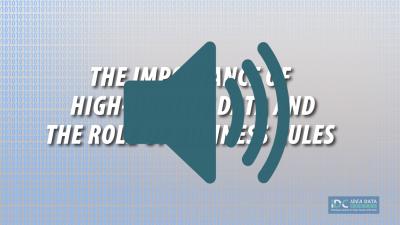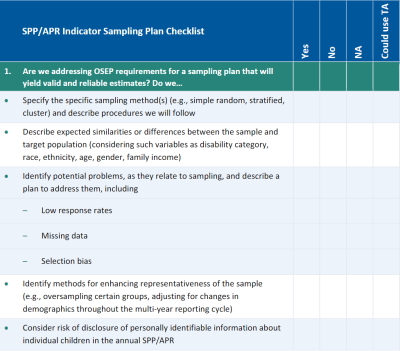
Resource Library
Guides. Briefs. Toolkits. Quick reference information. IDC and its partners created these data quality resources to help states better prepare to address their existing or emerging IDEA data quality needs. Use our search and filtering tools to navigate the library.
Resources 1 - 7 of 10
Format: Quick Reference
Working Principles of High-Quality IDEA DataUse this interactive PDF to learn more about the different components of high-quality data.
Format: Trainings
The Importance of High-Quality Data and the Role of Business RulesThe Importance of High-Quality Data and the Role of Business Rules instructional video provides a brief introduction to the concept of using business rules to promote and support the collection of high-quality data within state and local systems for IDEA Part B and C.
Format: Quick Reference
SPP/APR Indicator Sampling Plan ChecklistStates are allowed to use sampling for collecting data for select Part B State Performance Plan/Annual Performance Report indicators. Sampling can provide an effective means for targeting resources for data collection and improving data quality. However, there are important requirements that states must consider when designing and implementing their sampling plans. States can use this interactive self-assessment tool to determine whether their state’s sampling plan addresses Office of Special Education Programs sampling requirements for best practice and to identify action steps to improve their sampling procedures.
Format: Toolkits
SEA Data Processes ToolkitUsing the SEA Data Processes Toolkit to document data processes for all 616 and 618 data collections will establish a well-managed process for data collection, validation, and submission. In collaboration with IDC State Liaisons, states can use the toolkit to create and maintain a culture of high-quality data and establish and support consistent practices that produce valid and reliable data, while building the capacity of state staff.
Format: Quick Reference
Response Rate, Representativeness, and Nonresponse Bias—They All Matter!Response rate and representativeness are important terms in survey work. Consideration of both is necessary to ensure that collected data are valid and generalizable. This resource briefly defines and compares the terms while also explaining how they relate to nonresponse bias.
Format: Guides and Briefs
Parent Involvement Data: How to Measure and Improve Representativeness for Indicator B8This interactive resource provides states with an overview on how to gather representative parent involvement data for Part B SPP/APR Indicator 8. The resource defines key concepts such as representativeness, sampling, nonresponse bias, response rates, and weighting. It also offers information on how to improve the quality of parent involvement data, including strategies that can help states collect representative data and evaluate and improve the representativeness of their data before, during, and after data collection.
Format: Applications and Spreadsheets
Nonresponse Bias Analysis ApplicationThe NRBA App is an interactive nonresponse bias application powered by state-of-the-art statistical software. We developed this application to help states examine their SPP/APR Indicator 8 and Indicator 14 data through nonresponse bias analysis. The NRBA App allows users to conduct reproducible analyses of response rates, representativeness, and nonresponse bias, tailored to their survey’s data collection method.








